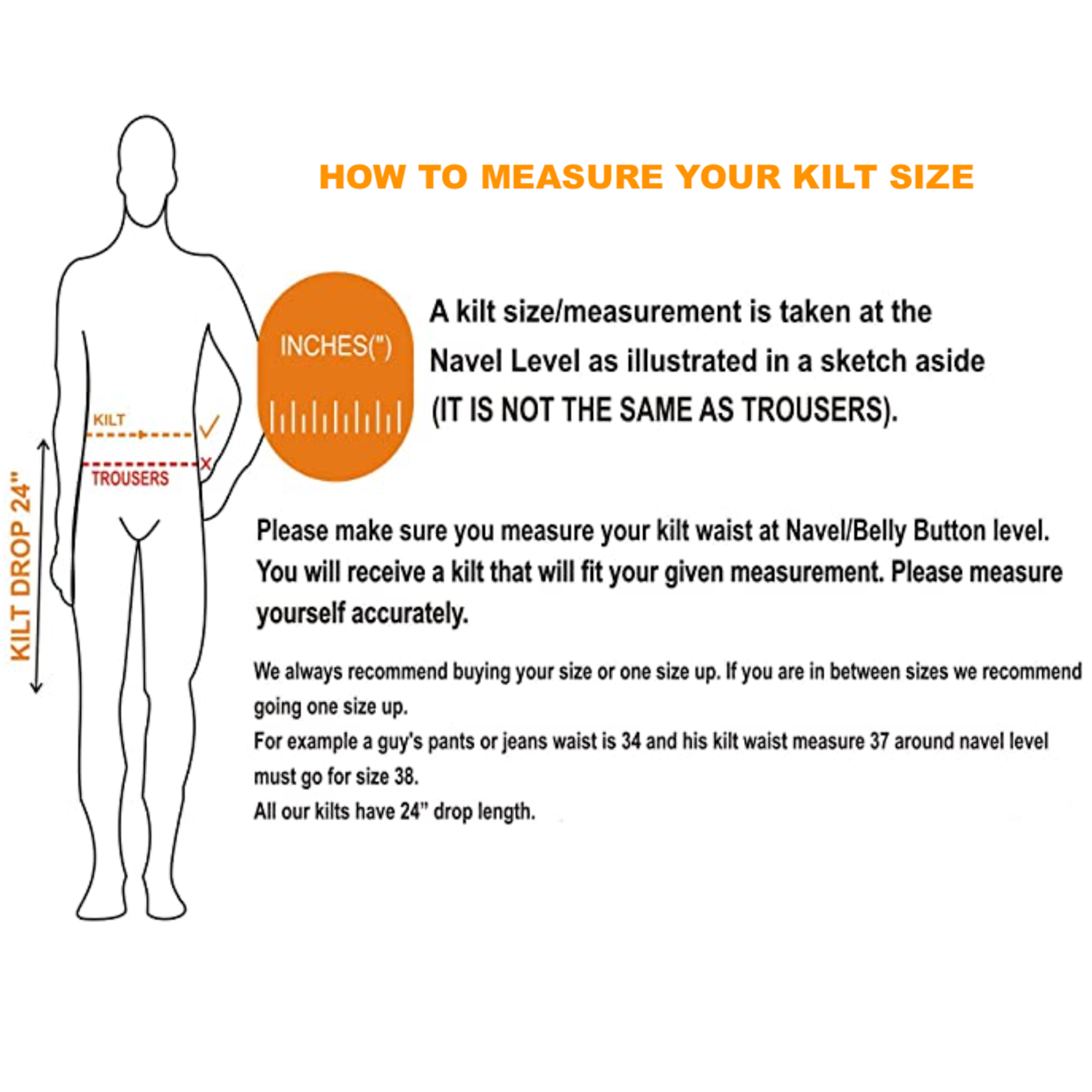
















Macleod of Harris Tartan Kilt Outfit - Highland Legacy
- $189.99
$289.99- $189.99
- Unit price
- per
Free Shipping
All kilt outfit package deals come with Free Priority Shipping 2-4 Business Days
Kilt outfit production takes 5-7 Business Days
Description
xCelebrate your Scottish heritage with our Macleod of Harris Tartan Kilt Outfit, perfect for ren fests, Highland games, and Scottish weddings. This outfit features the renowned Macleod tartan, crafted from quality wool, and includes a full set of traditional accessories, ideal for Hogmanay, Burns Night, and other Scottish cultural events.
Crafted with precision and care, our kilt is composed of 8 yards of 16-ounce premium acrylic wool, blending comfort with durability. Each piece is expertly pleated to the sett, reflecting the finesse of traditional Scottish craftsmanship. We enhance this with high-quality pewter accessories, adding both style and enduring strength. Completing this classic ensemble is a 24-inch standard kilt length, meticulously designed to ensure a perfect, authentic fit. This kilt represents not just an outfit, but a testament to quality and heritage.Sizing Guide
xWhen ordering a kilt, please note that the sizing is different from pants or jeans. Kilts are worn over the belly, so it's important to measure your waistline all around at the point of your belly button area. If your measurement falls between two available sizes, we recommend selecting the larger size for a comfortable fit. Please keep in mind that you cannot order based on your pants or jeans size when it comes to kilts.

Discovering Your Tartan
xA Guide to Finding Your Scottish Roots
Finding the perfect tartan that represents your Scottish heritage can be an exciting and rewarding experience. Whether you're looking to represent your family, clan, or just want to celebrate Scottish culture, there are plenty of options to choose from. In this blog, we'll explore some ways to find the perfect tartan for yourself.
Start with your surname or clan name:
The first and easiest way to find your tartan is to start with your surname or clan name. There are numerous online resources available that can help you find your tartan based on your family name. The Scottish Register of Tartans is a great place to start, as it contains a comprehensive list of tartans and their associated clans and surnames.
Explore tartan patterns:
If you don't have a specific family or clan tartan, consider exploring tartan patterns that are meaningful to you. The Black Watch tartan, for example, is a popular tartan that represents the Scottish military regiment of the same name. The Pride of Scotland tartan is another popular option that is often worn to celebrate Scottish heritage.
Look for national tartans:
If you want to represent Scottish culture as a whole, consider looking for national tartans. The Scottish National Tartan, for example, is a popular tartan that is often worn to celebrate Scotland's national identity. Similarly, the Irish National Tartan represents Irish heritage.
Consider your heritage:
If you have Irish heritage, consider exploring tartans that are linked to Ireland, such as the Heritage of Ireland tartan or the Irish Traditional tartan. Likewise, if you have Scottish and Irish heritage, you can consider tartans that represent both cultures.
Visit local Scottish shops and events:
One of the best ways to explore tartans and find the perfect one for yourself is to visit local Scottish shops and events. You can talk to experts and enthusiasts who can guide you in the right direction and provide you with invaluable advice on selecting the perfect tartan.
In conclusion, finding the perfect tartan to represent your Scottish heritage is an exciting and rewarding process. By exploring your surname, clan, national tartans, heritage, and exploring different tartan patterns, you'll be able to find the perfect tartan for yourself. Make sure to visit local Scottish shops and events for guidance and advice. Happy tartan hunting!
Size Chart
- Choosing a selection results in a full page refresh.



